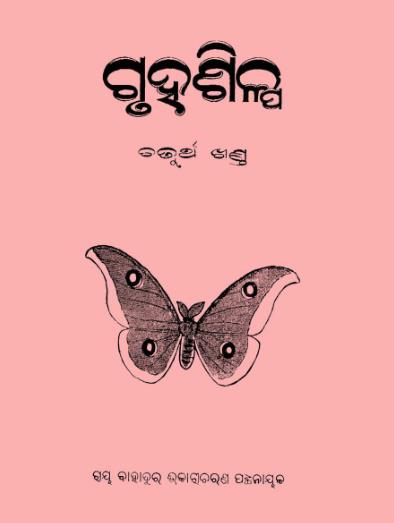Published in 1940, Gruhashilpa, Vol. 4 by Bhikari Charana Patnaik continues the author’s influential exploration of domestic arts and practices in Odia culture. This volume stands as a testament to the importance of household skills, home management, and the artistry involved in everyday life. Patnaik’s work not only serves as a practical guide but also as a cultural artifact that reflects the ethos of Odia society during the early 20th century.
Gruhashilpa, Vol. 4 is part of a series that meticulously details various aspects of homemaking, emphasizing the significance of traditional crafts and culinary arts. Patnaik writes with clarity and enthusiasm, making the content accessible to a wide range of readers. Each chapter is thoughtfully structured to provide practical advice alongside cultural insights, ensuring that readers not only learn but also appreciate the heritage embedded in these activities.
One of the central themes of this volume is the celebration of traditional crafts that have enriched Odia culture for generations. Patnaik includes detailed instructions for various activities such as handicrafts, textile weaving, and decorative arts. These crafts are not merely tasks to be performed; they are artistic expressions that reflect the identity and creativity of the Odia people. By documenting these practices, Patnaik plays a crucial role in preserving cultural heritage, encouraging readers to engage with their traditions meaningfully.
The culinary section of Gruhashilpa, Vol. 4 is particularly noteworthy, featuring a range of recipes that highlight local ingredients and traditional cooking methods. Patnaik emphasizes not just the nourishment of the body but also the cultural significance of food preparation and communal dining. Recipes are accompanied by tips on presentation and seasonal variations, enhancing the reader’s ability to make dishes that are both delicious and visually appealing. This approach elevates cooking from a mundane task to a celebratory act, fostering family togetherness and cultural pride.
Another significant aspect of Gruhashilpa, Vol. 4 is its focus on empowering women through knowledge and skills related to household management. Patnaik articulates the essential role women play in creating and maintaining a nurturing home environment. By equipping women with practical skills in cooking, crafting, and resource management, he encourages them to embrace their agency and contribute actively to their families and communities.
Patnaik’s writing is a powerful affirmation of women’s roles during a time when their contributions were often overlooked. By promoting the value of domestic arts, he dismantles stereotypes surrounding household work and acknowledges it as a vital form of labor deserving of respect and appreciation.
Gruhashilpa, Vol. 4 is more than just a manual for home-making; it is a cultural document that captures the essence of Odia life in the 1940s. Patnaik’s engagement with socio-cultural themes enriches readers’ understanding of the historical context in which these practices occur. His exploration of community ties, family values, and traditional rituals provides a holistic view of the interconnectedness of domestic life.
Moreover, this volume serves as a reminder of the importance of preserving regional customs in an age of modernization. Patnaik’s work encourages readers to value their heritage while adapting practices for contemporary living, ensuring that cultural identity remains vibrant and relevant.
Books Info
| Books name | Gruhashilpa Part- 4 / ଗୃହଶିଳ୍ପ |
| Author | Bhikari Charana Patnaik |
| No Of pages | 66 |
| Publisher | NA |
| Publication | 1940 |
| Printed At | NA |
| Distributor | NA |

